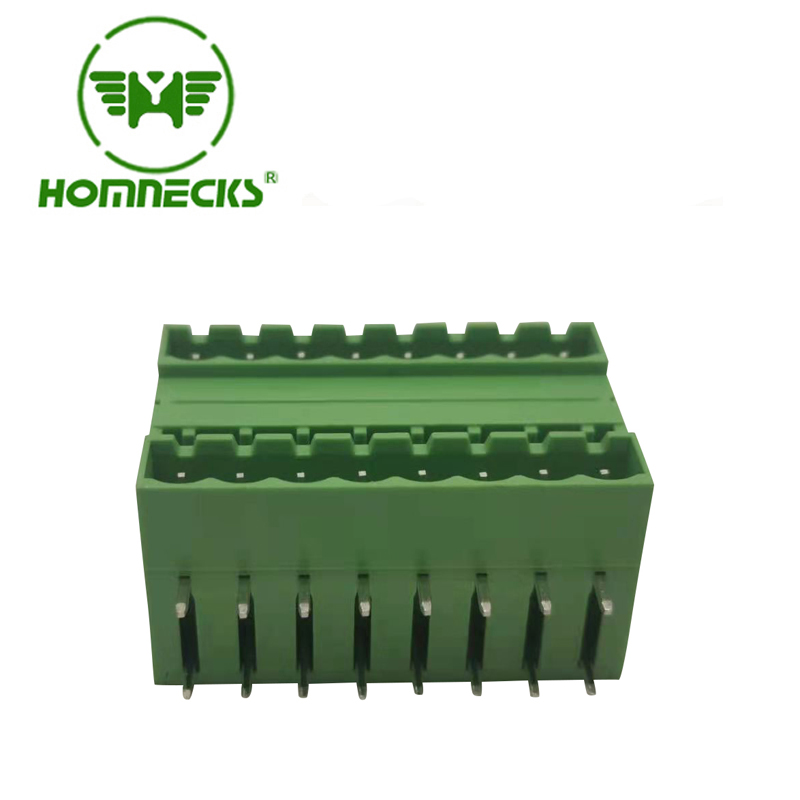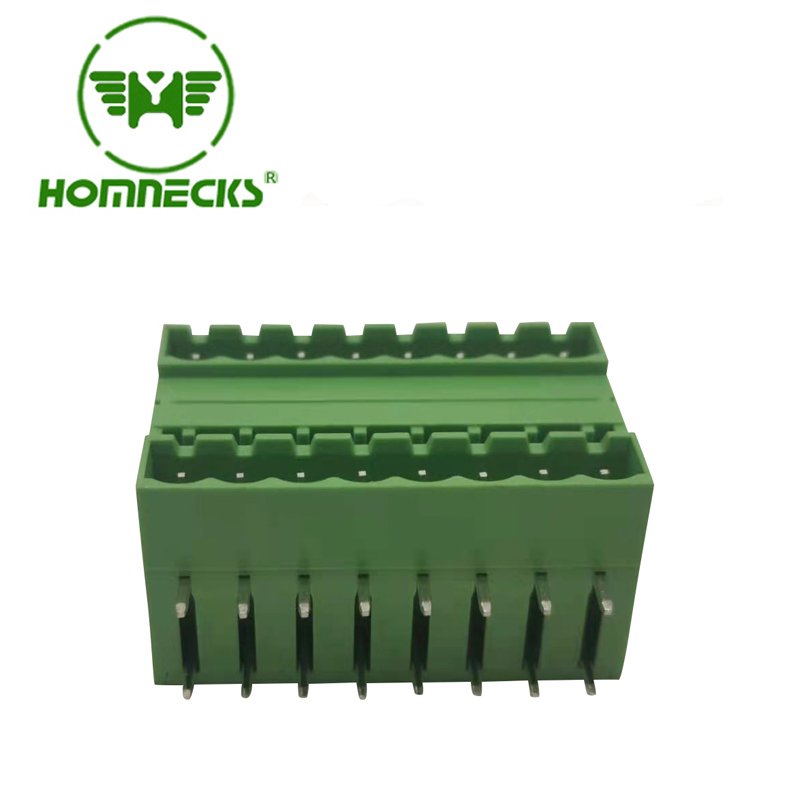The solder pin design of screw terminals is usually divided into two types: straight pin and bent pin (Bent Pin or Right-Angle Pin). These two designs differ in installation method, space occupation and application scenarios. Here are their detailed differences:
1. Installation direction
Straight pin: The solder pin extends in a straight line with the terminal body and is installed perpendicular to the PCB (printed circuit board).
Bent pin: The solder pin is bent 90 degrees at the end and installed parallel to the PCB.
2. Space occupation
Straight pin: Since the solder pin is inserted vertically into the PCB, the terminal body will occupy the vertical space above the PCB.
Applicable scenarios: Suitable for applications with sufficient space above the PCB.
Bent pin: The solder pin is parallel to the PCB, and the terminal body is parallel to the PCB, occupying less vertical space.
Applicable scenarios: Suitable for applications with limited space above the PCB.
3. Installation method
Straight pin: The solder pin needs to be inserted vertically into the via hole of the PCB, usually used for through-hole technology (THT).
Bent pin: The solder pin can be directly soldered on the surface of the PCB, suitable for surface mount technology (SMT) or through-hole technology.
4. Mechanical strength
Straight pin: Since the solder pin is inserted vertically into the PCB, it has high mechanical strength and can withstand large tension and vibration.
Applicable scenarios: Suitable for applications that require high mechanical strength, such as industrial equipment or automotive electronics.
Bent pin: The solder pin is connected parallel to the PCB, and the mechanical strength is relatively low, but it can still meet most application requirements under reasonable design.
Applicable scenarios: Suitable for occasions where mechanical strength is not required, such as consumer electronics.
5. Soldering process
Straight pin: Usually wave soldering or manual soldering is used, which is suitable for through-hole insertion technology.
Bent pin: Reflow soldering (for SMT) or wave soldering (for THT) can be used, and the soldering process selection is more flexible.
6. Heat dissipation performance
Straight pin: The solder pin is inserted vertically into the PCB, the heat dissipation path is short, and the heat dissipation performance is better.
Bent pin: The solder pin is parallel to the PCB, the heat dissipation path is long, and the heat dissipation performance is slightly worse, but the heat dissipation can be optimized through PCB design.
7. Electrical performance
Straight pin: Since the solder pin is directly inserted into the terminal block 6 pole, the electrical connection path is shorter and the resistance is lower, which is suitable for high current applications.
Bent pin: The electrical connection path is slightly longer, which may increase a small amount of resistance, but the impact can be ignored in most applications.
8. Application scenarios
Straight pin:
Industrial control equipment
Automotive electronics
Power supply equipment
High vibration environment
Bent pin:
Consumer electronics (such as TVs, audio)
Communication equipment
PCB design with limited space
9. Cost
Straight pins: Usually have lower costs because of their simple structure and mature production process.
Bent pins: May have slightly higher costs due to the need for additional bending processing.
10. Design flexibility
Straight pins: The design is relatively fixed and suitable for standardized applications.
Bent pins: The design is more flexible and the solder foot direction can be adjusted according to the PCB layout, which is suitable for high-density PCB design.
Summary
Characteristics Straight Pin Bent Pin
Installation Direction Vertical PCB Parallel PCB
Space Occupancy Occupies vertical space Saves vertical space
Mechanical Strength Higher Lower
Soldering Process Wave Soldering, Manual Soldering Reflow Soldering, Wave Soldering
Heat Dissipation Better Slightly Worse
Electrical Performance Smaller Resistance Slightly Larger Resistance
Application Scenarios Industrial, Automotive, High Vibration Environment Consumer Electronics, Communication Equipment, Space-Constrained Design
Cost Lower Higher
Design Flexibility Lower Higher
Choosing a straight pin or a bent pin depends on the specific application requirements, including space constraints, mechanical strength, heat dissipation requirements, and cost.

